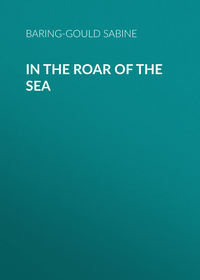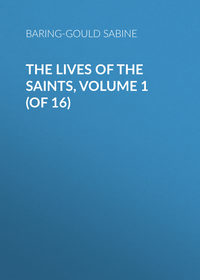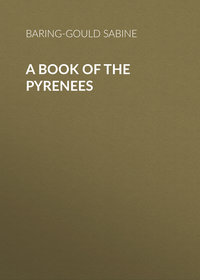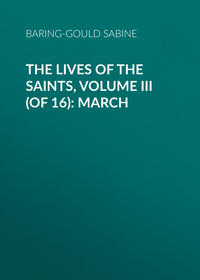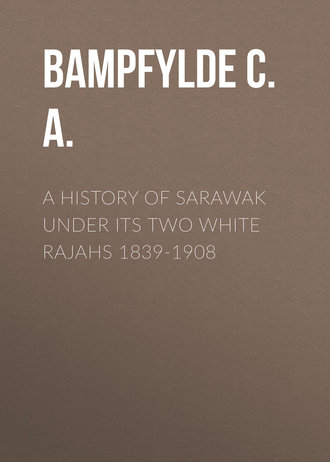 полная версия
полная версияA History of Sarawak under Its Two White Rajahs 1839-1908
We may mention here that the negotiations with Belgium had fallen through the previous year. The reason is not difficult to discover, for the Rajah wrote: "I wrote to you about the Duke of Brabant and my talk with him. His views must change greatly before I entrust our people to his guardianship."
The Premier, Lord Palmerston, and the Secretary for Foreign Affairs, Lord John Russell, with other influential members of both Houses, were now very favourably inclined towards the Rajah and Sarawak. Lord John Russell had pledged himself to lay the statement of facts as prepared by the Rajah before the Law Officers of the crown for their opinion, and should it be favourable to bring the question of recognition of Sarawak before the Cabinet.279 The Law Officers were called upon to decide whether Sarawak was independent of or feudatory to Bruni. The decision was favourable, for Lord John Russell subsequently wrote to the Rajah: "If your authority is undisputed, he (Lord Russell) is now ready at once to propose to the Cabinet the recognition of Sarawak as an independent State under your rule and Government."
Before his return to England the Rajah heard that recognition had been granted, though he was not officially notified of the fact until his arrival there. It was full and complete; and a Consul was appointed to Sarawak for whom an exequatur was asked of the Rajah.280 The Rajah's forethought, which we have already recorded, that "time brings changes, and may work on the British Government" was thus fully justified. The Duke of Newcastle, Lords Palmerston and John Russell, Sir G. Grey, the Honble. Sidney Herbert, and Mr. Gladstone had been members of the Cabinet that issued the Commission, as they were now members of the Cabinet that granted the long refused recognition.
The Tuan Muda had accompanied the Rajah from England. He had assumed the surname of Brooke by the desire of his uncle, and this had been decided upon before the defection of his brother had been known. The Rajah desired it because it was the name of the ruling family, and it would remove confusion and ambiguity, and place his nephew in a clearer position before the world. The Tuan Muda refused to take the title of Rajah Muda, or to be formally recognised as his uncle's heir, trusting that his brother might pave the way to reconciliation and to his reinstatement.281
Whilst the Rajah remained at Kuching to restore order, and to introduce proper systems into the various departments, the Tuan Muda returned to Sekrang, where he was received with many demonstrations of good feeling. The population turned out and towed and escorted his pinnace up the river, and salutes were fired wherever he passed. But they were not more glad to welcome him, than he was to see them. He then visited all the out-stations as far as Bintulu. Muka he found prosperous, and the people happy. He then returned to Sekrang to prepare for the expedition against the Kayans.
This powerful tribe has already been spoken of as living far inland on the head-waters of the Rejang. They were a continual trouble to the Dayaks who lived on that same river, but lower down, raiding their country, taking heads, and making captives, whom they tortured to death. Their country was not easily accessible, on account of the rapids in the river. The first rapids on the Rejang are about 170 miles from the mouth; these passed, the river is navigable for sixty miles, then ensue further rapids for about five miles, and then again it is navigable for fifty more. The upper rapids, called those of Makun, are the most serious and difficult to overcome, so serious, indeed, that the Kayans did not suppose it possible that an enemy could ascend above them.
But it was necessary to chastise and bring these troublesome neighbours into subjection. Before the Tuan Muda had left for England an ultimatum had been sent to Akam Nipa to deliver up the murderers of Steele and Fox. They had been committing great depredations on the lower Rejang, and Mr. Cruickshank, the Resident there, had appealed to the Government at Kuching to bridle them. Not only were the murderers of Messrs. Steele and Fox with them, but, as we have previously mentioned, they had lately descended and made a treacherous attack on the Katibas Dayaks, who had stood true to the Sarawak Government. Professing friendship, they had seized an occasion when most of the men of Katibas were absent, and had killed seventeen of the men who had remained at their homes, and a hundred women and children. Their captives they tortured in the most horrible manner, hacking them with knives and gouging out their eyes before putting them to death. And not only were the men thus treated, but also most of the women. They burnt fourteen long houses, or villages, and decamped.
Then they had engaged a man named Paring to lure some of the Dayaks into an ambush. Paring, a Kayan, had married a Dayak wife, and when he came to Katibas to visit his wife's relations he persuaded eighteen men to accompany him into the Kayan country to propose terms of peace, and when they demurred he made himself responsible for the safety of the whole party. Having thus overcome their fears he led them to a place where the Kayans, under their chief Oyong Hang,282 were lurking in waiting for them. Eleven were at once bound hand and foot, but seven managed to escape into the jungle, and after several days returned in a famished condition to Katibas. The eleven were conveyed up the river, and on their way were carried into every Kayan house to be tortured by the women. On arriving at Oyong Hang's abode, one of them named Boyong was singled out to be sacrificed so as to attend in the abode of spirits the soul of Oyong Hang's son, who had lately died. He was to be buried alive under a huge wooden pillar, the mausoleum of Oyong Hang's son, early on the following morning. However, during the night, Boyong and another effected their escape, ran into the jungle, and found their way to the foot of the first rapids after twenty days' wandering. They were then in such an exhausted condition that they found it impossible to proceed further on foot, accordingly they lashed themselves by rattans to a log in the river, drifted down stream, and were eventually picked up and rescued. All the remaining men were strangled by the Kayans. The scoundrel Paring, not thinking that his villainy had been disclosed, had the audacity to go among the Dayaks again, when he was seized and brought to Kanowit, where he was sentenced to death. But when in confinement, awaiting the approval of the sentence from Kuching, he effected his escape. The alarm was, however, at once given, and he was pursued into the jungle by the Dayaks and killed.
In an expedition such as was contemplated, the Rajah or his deputy was obliged to obtain the voluntary assistance of his subjects. He had no paid army, he did not even provision the host for the expedition.
On this occasion the Tuan Muda consulted some of the chiefs at Sekrang as to the feasibility of attacking the Kayans. The Dayaks were never unwilling to join in such an excursion, though the only inducement that could be held out was loot, and relief from further annoyance. But it was laid down by the Government that no woman or child was to be molested.
As the chiefs thought that the proposed attack might be made, arrangements were pressed forward, and on May 19, 1863, at sunset, two guns were fired as a preparatory signal for the start from Sekrang, and the Tuan Muda led the party that was to proceed thence down the Batang Lupar and coast to the mouth of the Rejang, picking up on the way contingents of volunteers. Mr. Watson was at Kabong (Kalaka) at the head of a detachment, and Mr. Stuart Johnson was waiting at Kanowit, along with Sergeant Lees in charge of guns, muskets, and ammunition.
At mid-day on the 20th, the expedition started from Sekrang, "My crew were mostly old followers and servants who had been with me for years. Our boat was in perfect order, well painted and decorated with flags; for nothing tells so much as pride instilled and esprit de corps encouraged in the minds of the people."283
On the 21st, Lingga was reached and Banting visited. The natives there, the Banting or Balau Dayaks, were not eager to join the expedition as they were behindhand in their farming operations; however, after some hesitation and delay, they followed. On the 23rd, Kabong was attained, the town at the mouth of the Kalaka river. Here were Malays, useful fighting men, but for all that they showed reluctance to unite in the expedition. This is easily explicable, as they were apprehensive of attacking tribes at such a distance, and whom they had been bred up to fear as the most powerful in Borneo. And the Malays, unlike the Sea-Dayaks, though braver, do not love fighting for the sake of fighting. They shirked, but they went.
On the 24th, at starting the contingent consisted of sixty boats, with an average of forty men in each, and pushed up the mouth of the Rejang to Serikei, and Mr. Watson had gone on with forty boats from Saribas. On the following day Sibu was reached, where lived the Banyoks. Tani had been their chief, the conspirator who had been sentenced to death by the Tuan Muda, as mentioned in a previous chapter. But now Tani's son, Buju,284 at the head of his fighting men, readily joined forces to those of the Tuan Muda. On the 29th at 2 A.M. by hard paddling, Kanowit was reached. "At daylight our force had congregated about the village and on each bank of the river, which was so broad that thousands of boats would not have made much show. After having coffee, I commenced work with Sergeant Lees in examining all the stores, arms, and ammunition. The heavy guns and shot had been already despatched by the Kanowit and Katibas boats, which were now two days' start ahead of us. I had arranged that the foot of the first rapids should be our rendezvous, and the enemy were reported to be six days distant above this point. It took the greater part of the day distributing arms, ammunition, and sundry other things to be carried by the force. Our Europeans of the party were Messrs. Watson, Cruickshank, my younger brother, Sergeant Lees, and Lucas (the Captain) of the Venus.
"26th.– The principal natives persuaded me to remain over to-day or I would have pushed on to lose no time in this fine weather. They require time to settle many little matters with which they are particular. Some made their wills, others sent letters to their nearest relatives, acquainting them with their last wishes, and all our boats needed much preparation. The one prepared for me, into which I had to shift all my things, was sixty-six feet long, shaped like a coffin and totally devoid of elegance and beauty. She consisted of a single tree hollowed out and round at the bottom, but raised a little at her extremities. When the hollowing out is done, a bow and a stern-piece are fastened with rattans; they have not a nail in them; two light planks are also tied on top and then they are complete. Some have much speed, and are capable of carrying from forty to seventy men with a month's provision on board. They are adapted for passing the rapids, are buoyant in the falls, and the crews are able to use a long sweeping stroke with the paddles, such as could not be managed in shorter boats.
"29th.– As the fort clock struck eight, a gun was fired as a signal for starting, and about eighty boats left together; others had been going on during the night, and many were still behind. The current ran strong against us, and we were forced to hug the bank.
"The banks above Kanowit are steep, and Kanowit itself may be said to be the first pretty spot in the Rejang river, but above it is much variety of scenery – windings of the river, hills and hillocks of every shape."
As they ascended, ruined habitations and deserted paddy-fields were passed, that had been ravaged by the Kayans; to put a term to their violence a fort had been erected at Ngmah, between Katibas and Kanowit. This was now dismantled by the Tuan Muda on his way up, and he took the men and guns along with him. Above the junction of the Katibas with the Rejang for over a hundred miles the country was uninhabited.
On the 31st, the Baleh river, the left hand branch of the Rejang, was passed. Here the character of the scenery changes, the sides become craggy, and the river rolls over masses of rock, and through veritable gorges, with a swift current.
On June the 1st, the foot of the first rapid was reached, where the rendezvous had been appointed. Here all those who had gone on before were assembled in thousands. "Groups of Dayaks in all directions – some lounging on rocks, or on the patches of white sand in the bight, others mending their boats which they had hauled up in the most favourable places. Many were squatting round fires and cooking. Bright colours of clothes, flags, and painted boats were interspersed among them."
A council was held that same afternoon, and further proceedings were discussed. A hundred chiefs were present, and the Tuan Muda spoke, arranging the order of the bala, and insisting that the lives of women and children must be spared, and that the chiefs should be held responsible for the conduct of their followers. He was followed by Balang, "an ugly little broad man, with the jowl of a hog," the chief of Katibas, whose house had been burnt by the Kayans, all his property carried off, and many of his relatives and people killed. "I have no wish to return," said he, "if this expedition is unsuccessful. They may cook my head if I can't cook theirs."285 The force then consisted of 300 boats carrying 12,000 men.
On the following day the ascent of the Pelagus rapids was begun. The boats were forced up by the men with poles in their hands, and were aided by others on the banks hauling with ropes; whilst others again, where the water was shallow, were immersed in it pulling and shoving.
"Men seemed like ducks in the water. Swimmers and divers all had their duties, and the amount of exertion of this kind which the natives will undergo is simply wonderful. They keep it up hour after hour in the coldest mountain stream, jumping on to and over places where an Englishman could not gain a foothold, as the rocks are slippery as glass, and many of the ridges are not over three inches wide, making one giddy to look at them."
After a while the first portion of the rapids was safely surmounted, and a basin of calmly flowing water was reached. But this was not far, it afforded a breathing space before the next difficult point was reached, a perpendicular fall of ten feet. Here was a portage; provisions, arms, and ammunition had to be carried by land, and the boats hauled over sixty feet of a steep rocky incline, covered with water when the river was full, but now left dry. In the process, however, a good many of the boats went to pieces, and the crews had to be partitioned among the others.
This was followed by another fall, that had to be surmounted in the same way. "This last was a terrible job, and at every foot gained, I thought my coffin would have gone in two, as she creaked piteously. But at last we gained the summit of the first rapids. Here we stopped, as the crews required rest, and the sun was piercingly hot." The whole length of this first rapid is four miles, and the breadth of the river six hundred yards. Not one third of the force had as yet surmounted it, and some were discouraged and made no attempt to do so.
Next day, the 3rd, the Tuan Muda's thirty-fourth birthday, the coffin was advancing up stream where the river was broken up by islets and running between them, like a mill race, followed by the boat containing Mr. Cruickshank and Mr. Stuart Johnson, when, in punting, it was driven against a submerged rock and at once began to fill. Seizing his gold watch and chain, the Tuan Muda sprang into the water and swam to the boat that followed and was taken in; but provisions, the Tuan Muda's sword, spyglass, rugs, etc., all new from England, were irretrievably lost, and the whole crew were boatless; for the coffin was whirled down the stream.
"4th.– We advanced again as usual, and after about an hour's hard pulling and many ropes, the stream became smooth and deep, and no more rocks were in sight. The reaches were long and straight, with a steady current of two and a half knots. The land was level without being swampy, and the soil appeared to be a rich yellow loam. What land for agriculture! and it extends for miles."
They were now on the fringe of the Kayan country, and they came on the remains of the house of the chief Akam Nipa, which he had deserted. The enemy had retired before the advancing force, and not one had as yet shown himself; though a small party, consisting of seven men, that had gone into the jungle hunting, three days before, thinking that the Kayans had all retreated, had incautiously lain down to sleep, when they were captured, tortured slowly to death on the spot, and then decapitated.
On the 6th, the Tekok rapids were encountered, and another abandoned Kayan village passed. The hills now began to show, and the river to flow over rocks and between bluffs. Had this spot been held by the enemy, it would have been most difficult to pass, but they had considered it best to retreat.
On the 7th, the abandoned village of the Sekapans286 was reached and committed to the flames. There, farming grounds with the jungle freshly cut were found on both sides of the river. The scenery was very beautiful, but there was very little cultivation. The bays are sometimes five hundred yards in width, giving the appearance of a landlocked lake rather than a running river. The height of the hills varies under a thousand feet. Many fruit trees were on the bank.
"We were pulling with all our sinews, having continued it since morning, when at 3 P.M. we descried a sampan manned by a crew dressed in various colours, steering for us. They brought news of the enemy being fortified in a house287 round the next point, and on the leading boats approaching they were fired into, and some were killed and others wounded. The enemy's house was already surrounded, they said, but every time our fellows advanced some were shot down.
"Our crew pulled on, and on rounding the point, the stockaded dwelling of the enemy hove in sight, situated on a low spit. We steered across, out of the enemy's range into the bay, where all the boats of the advance party had collected."
Nothing could be effected till more of the force had come up, and till the field-piece could be mounted. This last was done during the night, and all was made ready for demolishing the fortified place in the morning; but the enemy, taking advantage of the darkness, had decamped in the night. It was afterwards ascertained that the bravest of the Kayans had been placed there, with strict orders to hold the place against the advancing flotilla. All the worst characters and principal leaders had been there too, and among them Sawing, Sakalai, and Talip. The house was now burnt, after having been rifled, and parties of Dayaks were sent in all directions to destroy the villages of the Kayans. Among the spoil taken was a Gusi jar valued at £150. In all directions smoke arose, and at night the flames could be seen leaping above the tree-tops from the burning houses.
The Tuan Muda now pushed on and passed the Majawa rapids.
"When we had reached the upper end of the gorge we could plainly survey the fall behind us – our force coming up one by one, with dense masses of thousands on the rocks, others wending an ant-like pilgrimage around the almost perpendicular banks and ledges. Toes and fingers often came in useful for clinging to every niche.
"Above this point we again reached smooth and deep water, running quietly. The crews were stopping and plundering things thrown aside by the enemy as they retreated. We pulled in untroubled waters for only an hour, and then arrived at dangerous rocky places, gradually getting steeper and steeper. The stream rushed past, and numbers of the boats were damaged. Fortunately we had picked up many native boats. The channels wound circuitously among very sharp rocks, over which we had to use ropes. Sergeant Lee's boat was smashed, and he and his crew were deposited on a rock for some hours. We came to for the night in a bight, surrounded in every direction by rocks. The leaders of our force lost one man here; as he was taking out a rope, an enemy blew a poisoned arrow into his chest, which knocked him down, when his head was cut off."
On the 11th, the foot of the Makun rapid was reached. But for some way below the great cataract the river eddies and boils and plunges over rocks, and races between projecting fangs and islets. Here for two hours they had to toil with poles and ropes. The Makun rapid is a descent of the river in one great slide, with swirls and whirlpools, and with such force that it is only possible to ascend it, one boat at a time, pulled by ropes, and with two or three in her punting to control her movements, and prevent her being stove in against the rocks.
The ascent was begun on the 11th, and successfully accomplished. But fifteen boats were lost.
"I resolved to push on with the force we had, viz. 150 Malays and about 100 Dyak boats. Watson and Stuart were now boatless, and they also had to harbour in Fitz's boat, which had become the refuge of the destitute. A satisfaction prevails at having overcome the greatest obstacle in the approach to the Kayan confines. We proceeded about five miles, and towards evening received news that some captives had been taken. The enemy held nowhere and were pursued like sheep. I at once decided to go no farther, as our work of destruction would serve as a sufficient punishment for these people, who have proved themselves a most dastardly set of cowards, running on every occasion, leaving their children and women at the mercy of the Dyaks. These stupid inhabitants trusted to the superstitious traditions of their forefathers to guard them without the help of man, and now awakened to the mistake of their impregnability, too late. They resorted to their heels on every occasion; and two young boys yesterday chased up a hill two men equal to the boys in arms, both parties having swords only.
"Our warlike munitions have been useless, and the gun only employed in firing twenty-one rounds on the bank in the afternoon. A boat arrived this morning, bringing three captives, one of whom I determined to leave on the bank to take a message, after we had left, to Oyong Hang. At sunset we collected the few chiefs, and the captive, a middle-aged woman, was brought before us. I told her, by means of an interpreter, that we attacked their country, because they had taken part against our friends and the subjects of Sarawak, and had harboured the three chief murderers of Messrs. Fox and Steele, named Sakalai, Sawing, and Talip. Whoever befriended them must necessarily become our enemies; besides, they had made several attacks on the Dyaks. I gave her a 12-pounder shot and a Sarawak flag, which were to be presented to Oyong Hang for him to make his choice. The latter was an emblem of peace, which would provide him with a safe-conduct to Kanowit, in order to open peaceful relations. The shot was an emblem of war, which we should conclude he had accepted if he did not shortly make his appearance with the flag. All attacks by Dyaks would be forbidden for the present, as it was our desire to be on friendly terms.
"The Dyak from whom I took the captive complained bitterly, and said he had lost a mother and sister, killed by the Kayans, and now wanted her (head) in exchange. I gave them to understand plainly that whoever touched her would suffer death.
"13th and 14th.– We waited for loiterers, who provoked me by their dilatoriness. Some had been wounded by poisoned arrows, but the only effect was feverishness. A few had ghastly wounds from spears. There had been more dreadful sights in this campaign than I had bargained for. Many women and children even had been killed by our people, who state, with some degree of truth, that in their excitement they had mistaken them for men, as they wore head-dresses similar to the dress of the men in this country. I resolved on any future occasion when I should have to call out the Dyaks, that a heavy fine should be imposed on any one perpetrating such acts. Still, at present, they can scarcely be expected to comprehend such a rule, as many are now thirsting for revenge, smarting under the loss of wives, mothers, and sisters, mercilessly tortured and killed by the Kayans, who have always been in the habit of practising the blackest treachery and making sudden attacks when professing the staunchest friendship.


